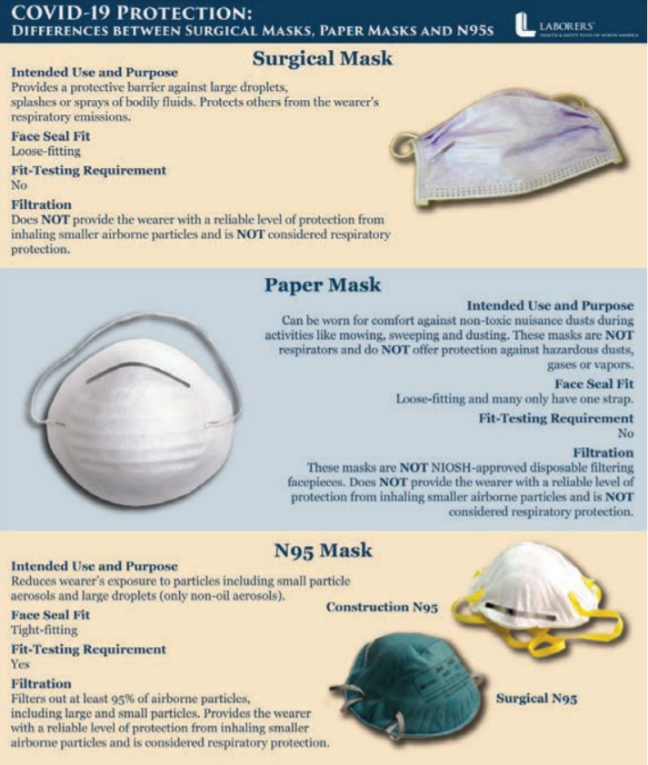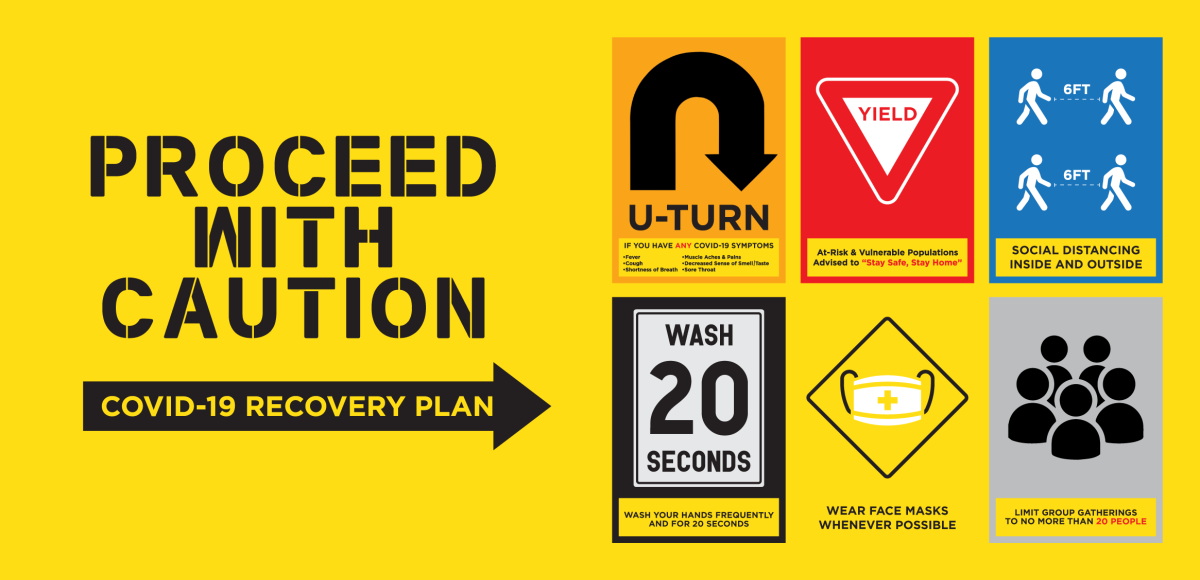Cart is empty

Covid 19 Preparedness, Safety plans, and Training
Covid-19 Preparedness, Safety Plans, and Training
With the end of the public quarantine approaching it is time for employers and employees in construction to start thinking about how we can properly prepare to return to work safely. It is hard to say whether or not the infection rate will increase as we attempt to get back to our normal schedules but we can take the proper precautions to ensure we are doing everything possible to stay healthy and safe.
General Measures to Prevent and Limit the Spread of Covid 19
Everyone’s main goal should be to protect yourself and others by taking steps to prevent and limit the spread of the virus. It is important to follow orders, guidance, and recommendations from federal and state agencies. Examples include respecting requirements to stay indoors, practicing social distancing and avoiding non-essential travel.
- Avoid close contact with people that are sick
- Follow CDC recommendations to wear facial covering in public spaces such as grocery stores and pharmacy’s
- Practice social distancing by limiting person to person contact within six feet especially when in enclosed spaces
- Wash your hands frequently with soap and water for a minimum of 20 seconds. Try to use hand sanitizer with an alcohol content of at least 60%
- Cover your mouth and nose with a tissue when you sneeze or cough, then dispose of the tissue and wash your hands
- Avoid touching your mouth, nose, and eyes with unwashed hands
- Clean surfaces that are touched often with disinfectant wipes or spray
What Can Construction Employers Do?
Being that construction workers usually work hand in hand with other people it is important for them and their employers to take extra precautions to protect themselves. Some construction has been deemed essential so those individuals are already at an increased risk along with construction workers that will be among the first to return to work. Employers may consider implementing daily wellness checks before workers access the project or jobsite. Suggested assessment methods could include a questionnaire about potential symptoms and travel and/or a temperature check performed by a designated supervisor.
- Perform a risk assessment of the jobsite.
- Educate/train workers about general precautions and regularly communicate plans to limit the spread of COVID-19.
- Institute policies and practices that maintain physical distance between workers.
- Identify, clean, and sanitize high-risk transmission areas regularly.
- Provide appropriate personal protective equipment (PPE) This may include N95 respirators, gloves, gowns or other protective clothing and eye
- If an N95 respirator is not available due to supply, workers should wear the most protective mask available until an N95 becomes available.
- Require sick workers to stay home and send sick workers home.
- Ensure workers can follow good handwashing practices.
- Provide clean water and soap for workers to use several times a day. On construction jobsites, this may take the form of temporary water stations, such as setting up water jugs and hand soap throughout the jobsite.
- If clean water and soap are not available, provide hand sanitizer. Ensure that stations in toilets stay stocked at all times and provide additional hand sanitizer when needed.
- Provide single use paper towels and trash cans for disposal.
- Allow workers to go on break to wash their hands, especially after using the bathroom and before or after eating.

- Utilize work practices when feasible to limit the number of potentially exposed workers on the jobsite at one time. This may include scheduling (e.g., staggering shift start/end times) or rotating crew access to a designated area during a shift. Stage the jobsite to stagger work and limit overlap of work crews.
- Restrict access to enclosed and confined spaces. Confined and enclosed spaces (e.g., trailers) should be identified and access should be restricted to essential personnel only. Enclosed spaces (e.g., toilets, break areas) must be viewed as potential transmission areas and treated accordingly. Time spent in these areas should be reduced as much as possible.
- Limit the number of workers gathering at one time. Modify jobsite communications and planning to reduce or eliminate group gatherings. This includes communal break areas and any other activity that would bring a group of workers together on a jobsite. Create policies around the delivery of materials and visits by third parties to the jobsite.
Employers should also consider posting a social distancing policy statement which covers protocols construction jobsites should follow to help prevent the spread of the novel coronavirus
What Can Construction Workers Do?
Workers should follow all safety measures suggested by there employer in addition to the general safety measures listed above. Below are some additional things construction workers can do to limit the spread further. Workers who experience these symptoms at work should report it immediately to a supervisor, be isolated from fellow workers and leave the site. Workers should follow the CDC protocol for home isolation after the onset of COVID-19 symptoms to prevent transmission of the virus to others. To limit the spread of the virus and its impact on daily operations, employers should consider available telework options for office staff.
- Maintain good workplace hygiene, including hand washing practices and cough/sneeze etiquette.
- Maintain a distance of at least six feet from other workers when possible, unless the task warrants otherwise (e.g., when performing a team lift). Limit large group interactions. Follow these same practices off the job.
- Report symptoms of COVID-19 immediately. If you are sick, stay home. If you feel sick and are at work, tell your supervisor.
- Cooperate with response measures instituted by your employer and those recommended by health officials at the federal, state, and local level.
- Do not share other workers’ phones, PPE or other work tools and equipment.
Covid-19 Safety Plans
Another requirement that may soon be in place in New York City is the implementation of covid-19 specific safety plans. As we have seen in other city’s contractors working on essential projects during the outbreak, from small home repair jobs to major health-care projects may be required to submit safety plans to city officials, along with a sworn affidavit pledging to implement them. These plans will most likely cover the following areas.
- Designated individual responsible for covid-19 compliance
- Personal (employee) Responsibilities
- Social Distancing
- Jobsite/office best practices
- Management of sick employees
- Material deliveries and anyone entering the jobsite
- Training, education, and communication
- Resources (CDC, OSHA, DOB, etc.)
Covid-19 Awareness and Prevention Training
Another important measure that is being discussed is infectious disease, epidemic preparedness, and covid-19 specific training courses. Many organizations and unions have started to request this training from there members and NYC DOB will most likely do the same soon. Able Safety has developed a 4-hour covid-19 awareness and prevention course that will be available within the coming week. For more information please call us at 718-593-4789 or email info@ablesafety.com
Important Links
NYC DOB Physical Distancing Guidelines for Construction Sites
How to Hold covid 19 Toolbox Talks
Sample Social Distancing Policy Statement


